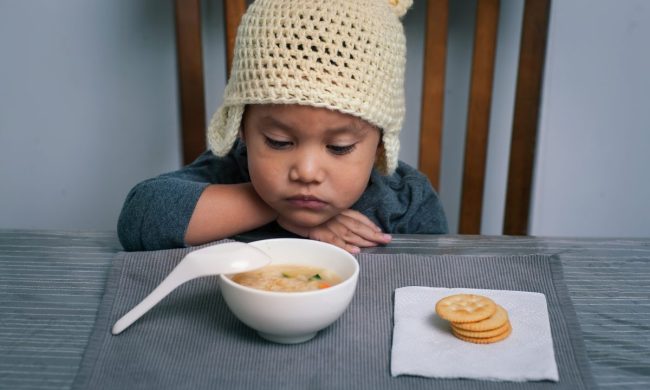Thanks to social media, parents get to witness new parenting styles pop up in real time. From helicopter parenting to being an almond mom and a lawnmower parent, you can take your pick at what to try with your children. The latest parenting style trend taking over social media FAFO parenting. But what is FAFO parenting, and is it something you want to try with your kids? Here’s the information about the latest craze on how to parent your children.
What is FAFO parenting?

In the simplest terms, FAFO parenting is f**k around and find out parenting. It’s when you let the child do what they want and find out what the consequences are on their own. The phrase “f**k around and find out” has been used for more than a decade, with origins from the African American Vernacular English. But TikTok Moms (MomTok) and celebrities added a layer to the phrase in relation to parenting. It means your child learns the cause and effect of their actions without parental involvement, as long as the child will not come to any harm.
If this sounds vaguely familiar, it just might be. Older generations like Boomers and Gen X, who grew up as “latchkey kids,” have voiced that it is pretty much how they were raised. Trends always come back around, but this parenting style has a new name for its old tricks.
Why FAFO parenting is having a moment
Social media is giving FAFO parenting its 15 minutes of fame. The current rise in popularity is in part due to a podcast hosted by Kylie Kelce, wife of former NFL player Jason Kelce, and a mother of four daughters. Kylie told a story on her “Not Gonna Lie” podcast about how she uses FAFO parenting on her children, and it has started a conversation about parenting styles.
An easy-to-understand example
Here is a streamlined example to understand FAFO parenting in a similar way to how Kelce explained on her podcast using one of her children. Imagine it is winter and your child refuses to bring a coat to school. They say they will be fine, and no one else wears a coat anyway. By lunchtime, you get a call to bring the child a coat because they’re cold. FAFO parenting means you do not bring the child a coat (as long as they will be safe without it, even if it means they don’t get recess) and see how they deal with the consequences of their actions.
A deeper dive into FAFO parenting

Where FAFO parenting can seem negative
This parenting style has the internet divided. Some parents say not being there for their children and not helping them with their actions is in line with neglecting them and that this style teaches children never to rely on their parents. Others say this style is the only way some children will learn, and after asking and asking, the parent doesn’t want to ask again, so they let the child decide and see what happens.
But people say similar things about gentle parenting because they don’t understand it’s not as simple as all or nothing. FAFO parenting is not for every decision the child makes, and it’s not for every child or every age.
When to use FAFO parenting
To take away the controversy of FAFO parenting, parents should understand when and where to use it. You have to really know your child to recognize if it would mentally and emotionally mess with them or if they would benefit from this approach. You also have to be aware if you are the kind of parent who would never tell your child, “I told you so,” or “Maybe next time you will listen to me,” as these phrases don’t help, especially when used with this parenting style.
How FAFO parenting can be a good thing for your child

If your child is emotionally mature enough and the effects of the actions won’t put the child in any harm or danger, let the child find out. The child may gain confidence in their decision-making, have a better understanding of cause and effect in the real world, may take less time to learn from mistakes, may think through situations in more detail, and may feel empowered by their choices when they get the result they want.
How to incorporate FAFO parenting into your life
If a complete submersion into FAFO parenting doesn’t seem like your style, sprinkle it in. It’s not meant to be the only way to be with your child, but more as an additive for certain situations. This parenting style could be a complement to gentle parenting, so you could blend the two to create a balance that works for your family.
It’s not about telling your child no or never telling your child no, and it’s not about leaving your child to their own devices and hoping for the best. You have to create a safe environment for your child to make the decisions they want to, see how it works out, understand what happens, and have the confidence to make the same or better choice next time.
If you are a parent who cannot bring yourself to ask your child to put on shoes one more time or to remember to bring their raincoat when they can see it’s raining out and the child keeps telling you they are fine — it might be time to see if FAFO parenting could help in those situations.
Your parenting style may change from child to child and from day to day, and that is fine. Being adaptable is a key part of being a good parent, so if you have a child you think may thrive with a little finding out the consequences of their own actions, give FAFO parenting a try and see how it goes.




